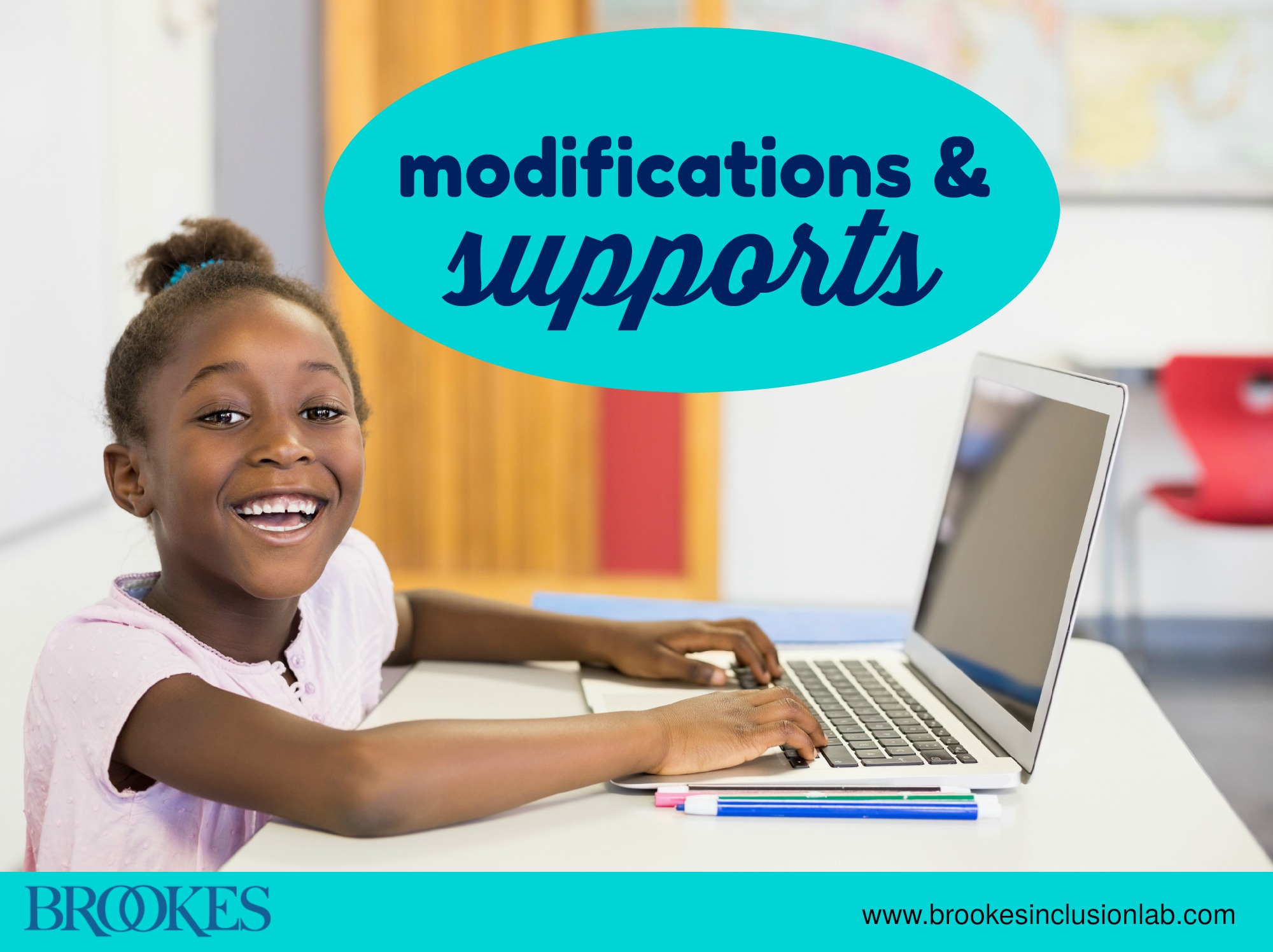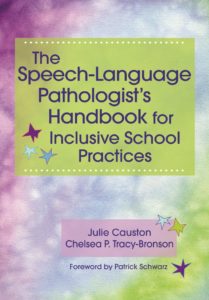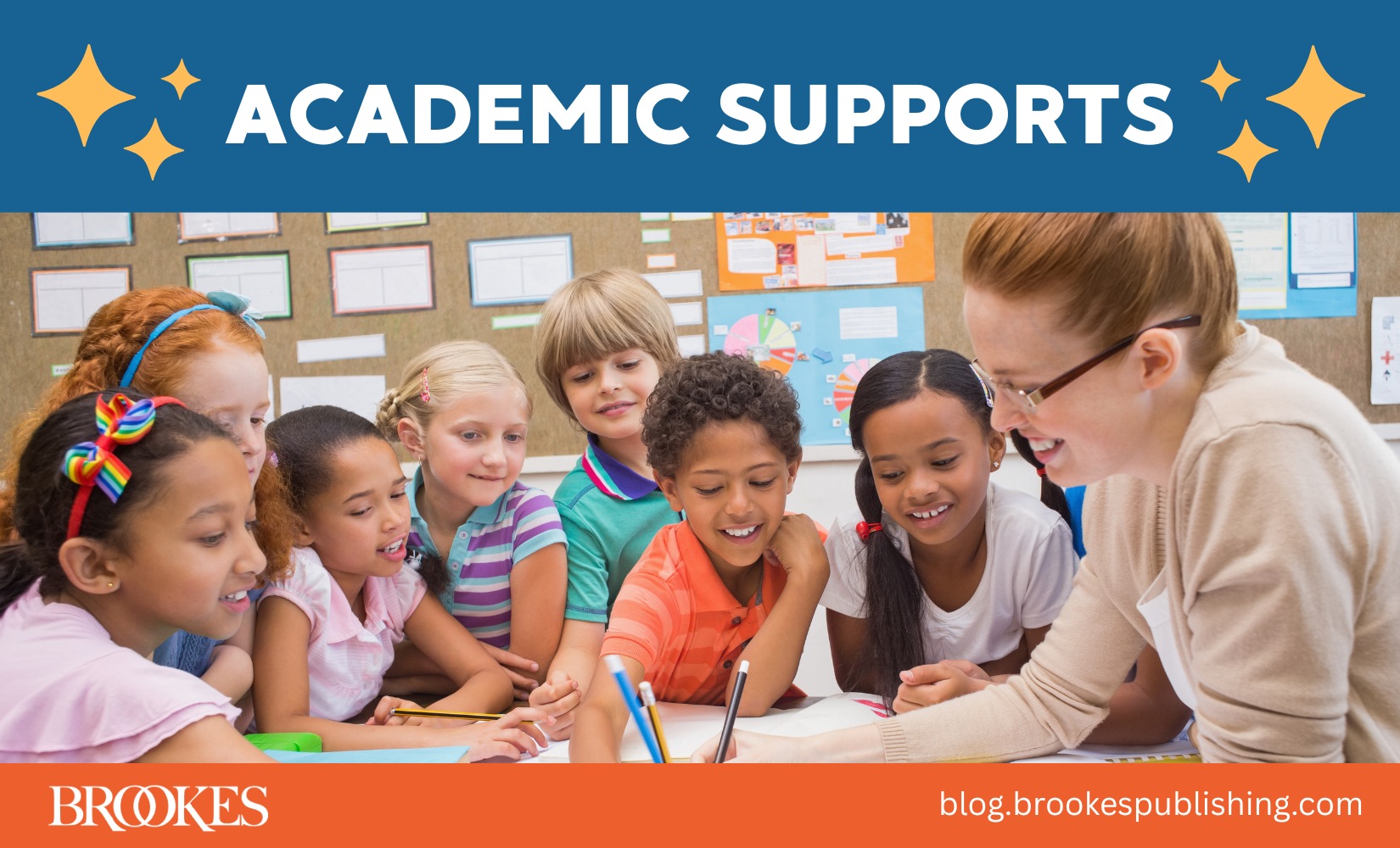Accommodations and Modifications for 10 Common Classroom Activities
November 27, 2018
Choosing appropriate accommodations and modifications is a great way to help your students with different learning needs participate in your inclusive classroom and reach their academic goals. (Not sure about the difference between accommodations and modifications? Read this Q&A with Inclusion in Action author Nicole Eredics, who shares a clear definition of each.)
 In today’s post, we bring you dozens of practical suggestions—both high-tech and low-tech—for supporting students with a wide range of disabilities and needs during 10 common classroom activities. Excerpted from The Speech-Language Pathologist’s Handbook for Inclusive School Practices by Julie Causton and Chelsea P. Tracy-Bronson, these ideas will help you promote access to the general education curriculum for all learners.
In today’s post, we bring you dozens of practical suggestions—both high-tech and low-tech—for supporting students with a wide range of disabilities and needs during 10 common classroom activities. Excerpted from The Speech-Language Pathologist’s Handbook for Inclusive School Practices by Julie Causton and Chelsea P. Tracy-Bronson, these ideas will help you promote access to the general education curriculum for all learners.
(Important note: choosing accommodations and modifications is a highly individualized process that depends on the needs of each specific student. Before you try out the suggestions below, carefully assess what each learner needs to be successful.)
Activity #1: Sitting and Listening
When students are asked to sit and listen, consider providing these supports:
- Visuals to look at
- Movement breaks
- An FM system that amplifies the teacher’s voice
- A rug or mat to help determine where to be
- An object to signify who is speaking, such as a “talking stick”
- A ball to sit on
- Choice about where to sit
- A focus object for students to hold or manipulate
- A signal to start listening
- Their own copy of the book that is being read
- A topic bag filled with objects that relate to the content
- A job to do: help another student, write ideas on the board
Activity #2: Presenting Orally
When students are asked to present orally, consider providing these supports:
- Note cards
- Visuals
- A handout of key points
- A voice recorder
- A microphone
- PowerPoint slides to guide them
- Preprogrammed communication device
- Choice about the supports they need
Activity #3: Test Taking
When students are asked to take a test, consider providing these supports:
- A review of test strategies
- A review of the information on the test
- A practice test
- A double-spaced test
- Easy questions first
- Someone to read the test questions
- A reduced number of choices (eliminate one or two of the choices)
- For matching tests, a long column divided into smaller sections
- A computer so they can complete it electronically
- As much time as needed
- An oral exam instead of a written one
- A performance-based test
- The option of drawing responses
- Simplified language on the test
Activity #4: Completing Worksheets
When students are asked to complete worksheets, consider providing these supports:
- A word bank
- Clear directions
- File folder labels for students to stick answers onto
- A direction sheet where the most important information is highlighted
- Fewer problems or questions to complete
- Choice about type of writing instrument
Activity #5: Discussing a Topic
When students are asked to discuss a topic, consider providing these supports:
- A “talking object” to signify who is speaking
- Note cards with students’ ideas written on them
- Peer support
- A preprogrammed communication device with a question on it
- A piece of paper for drawing ideas or concepts
- Choice about how to participate in the discussion
- Their own copy of the text the students are discussing
- A highlighted section of the text—have the student read and others discuss
Activity #6: Note Taking
When students are asked to take notes, consider providing these supports:
- A lecture outline the student can complete during the lecture
- A chart of key points
- A graphic organizer to help them organize thoughts
- The teacher’s notes from the day before
- A laptop computer or an AlphaSmart to ease the writing process
- Choice about how to take notes
- A copy of the teacher’s notes with key words to fill in
- Lecture notes enhanced with pictures
Activity #7: Using a Computer
When students are asked to use a computer, consider providing these supports:
- A task card with simple directions on how to start up the program
- Modified keyboard
- Enlarged font
- IntelliKeys
- An adjusted delay on the mouse
- An alphabetical keyboard
- A larger keyboard
Activity #8: Reading a Text
When students are asked to read a text, consider providing these supports:
- Background information about the text
- Bullets of the main ideas
- An audiobook version of the text
- Larger print font
- Highlighter for key words and concepts
- Choral reading
- Sticky notes to write questions on
- Choice about what to read
Activity #9: Writing
When students are asked to write, consider providing these supports:
- Option to tell a friend the story before writing it
- A whole-group discussion before writing
- Graphic organizers to help organize ideas
- Use of simplified “bullet writing”
- Pencil grips for students who need help with motor skills
- Option for student to dictate the story to an adult or a peer
- Stickers to fill in blanks
- Option to draw instead of write
- Raised-line paper so that students can feel lines
Activity #10: Organizing Materials
When students are asked to stay organized, consider providing these supports:
- Color-coded folders
- A planner
- An agenda written on the board
- Assignments written on the board in the same place
- Assignments that are already three-hole-punched
- A picture schedule
- A sticky note on the student’s desk listing things to do
- A homework folder
- A regular desk check
- Clock or timer on desk
- A verbal rehearsal of the schedule
- A consistent routine
What modifications and accommodations have you found effective in your own classroom? Are there favorite strategies of yours that aren’t on this list? Add them in the comments section below—we love to hear what works for other teachers!
MORE ON MODIFICATIONS
10 Modifications for Learners with Sensory Issues
17 Great Accommodations & Modifications
10 Worst Modifications for Students with Disabilities (and 100+ Good Ones!)




Write a Comment
Your email address will not be published. Required fields are marked *
Post a Comment